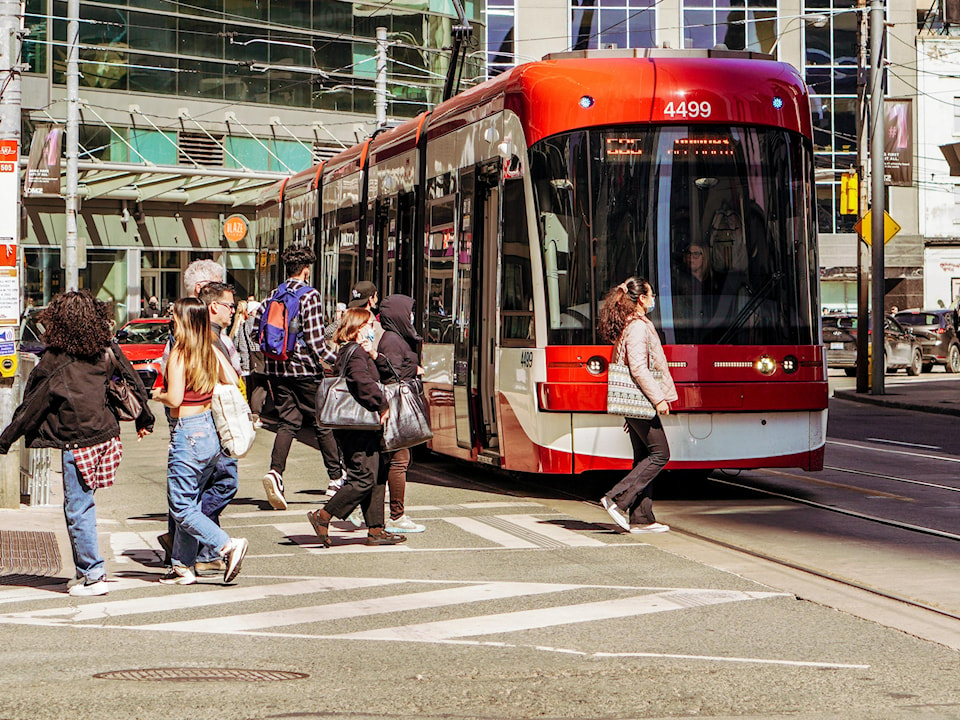For many, the sway of a subway car or the background chatter of a packed bus is part of the daily commute, stitched into the life of Toronto. However, underneath this comfort, both transit employees and passengers alike are becoming increasingly uneasy about the TTC due to an increase in violent occurrences in recent years.
Reet Arora recounts a harrowing experience while riding the TTC bus late at night in early April this year. The international second-year journalism student at Humber Polytechnic vividly remembers being both verbally and physically attacked while she was getting off a bus by a middle-aged woman who appeared to be under the influence.
"She told me, 'I will follow you home and I will kill you tonight,'" Arora said, describing the terrifying encounter. "In the back of my mind, I knew she was clearly unwell, but that didn’t make it any less frightening."
Arora’s story is one of many highlighting safety concerns for both riders and staff of the Toronto Transit Commission (TTC). Violence on the TTC has been on the rise in recent years, with reports of both verbal and physical altercations occurring multiple times a day.
Since 1849, the public transit system in Toronto has undergone significant changes since its inception. However, in recent years, it has had to approach the situation of how to tackle the ever-growing and changing mental health and drug crises that affect Torontonians.
Stuart Green, a spokesperson for the TTC, acknowledges the troubling pattern.
"Incidents happen multiple times a day, ranging from minor altercations to serious assaults," Green said.
"During the COVID-19 pandemic, we saw a noticeable increase in incidents involving unhoused individuals and those with addiction issues using the TTC as a shelter. Libraries, malls, and other public spaces were closed, leaving the transit system as one of the few options," he said.
While the overall number of incidents began to decline post-pandemic, the TTC’s safety challenges remain significant. The transit system records and tracks incidents rigorously to identify hotspots and deploy resources effectively. However, the statistics reflect a reality many riders find unsettling.
A recent monthly report published by the TTC displayed a slight decrease in the number of offences against customers. However, since the pandemic, these offences have shifted drastically annually, with a similar report in 2023 showing a 46 per cent increase in offences in 2022 compared to the year prior.
Whether passengers are international, domestic, or use the TTC regularly, it seems as though riders have either experienced an incident on the TTC or know someone who has.
Vanessa Amaral, a regular TTC user, said she's been verbally assaulted while on the subway.
"I take the subway and bus twice a week, and while I’ve never been attacked, I’ve had someone swear at me. It’s scary to think about how often these things happen, especially when so many kids rely on the TTC," she said.
The TTC has also faced an increase in substance use on its vehicles and in stations, Green said.
"We’ve seen people smoking or using drugs openly on streetcars," he said. "It’s a distressing reality, but one we’re actively working to address."
To tackle these challenges, the TTC has partnered with mental health workers, street outreach teams, and crisis counsellors. These professionals are deployed throughout the transit system to de-escalate situations and connect individuals with appropriate services.
"It’s about a compassionate approach," Green said. "If someone is simply seeking shelter and isn’t causing harm, we let them be. But if their behaviour becomes disruptive or dangerous, we step in."
The connection between homelessness, mental health, and substance addiction is a critical aspect of the issue.
“We need to remember that everyone has a story,” Amaral said. “For many of the people we see on the TTC, something traumatic happened in their lives. It’s sad that they’re often judged.”
The TTC has ramped up its safety measures in response to growing concerns. Special constables, fare inspectors, and additional station staff have been hired to enhance visibility and deter criminal activity. High-visibility uniforms and increased surveillance through CCTV cameras serve as both preventive and investigative tools.
"Safety and security are our top priorities," Green said. "We’ve allocated millions of dollars to these initiatives, and we’re always looking to improve. If a station or route shows an uptick in incidents, we deploy more personnel there."
Yet, some riders feel these measures fall short. Arora, for instance, now questions her reliance on public transit.
"I used to believe I didn’t need a car to live in Toronto," she said. "But after what happened, I’d feel safer if I had one."
As the TTC continues to grapple with safety challenges, it faces the delicate task of balancing public safety with compassion for vulnerable populations.
"It’s a dignity and respect issue," Green said. "Not everyone causing disruptions is homeless or addicted, but for those who are, we strive to provide support rather than punishment."
Arora’s experience underscores the urgency of addressing safety concerns on the TTC. The transit system is a necessity to get to work, school, or appointments for many riders, and ensuring its safety is not just about preventing incidents but fostering trust and accessibility for all.
"Public transit should be free and safe for everyone," Amaral said. "But until we address the root causes of these issues, like mental health or addiction, or inequality, it’s hard to see significant change happening."




